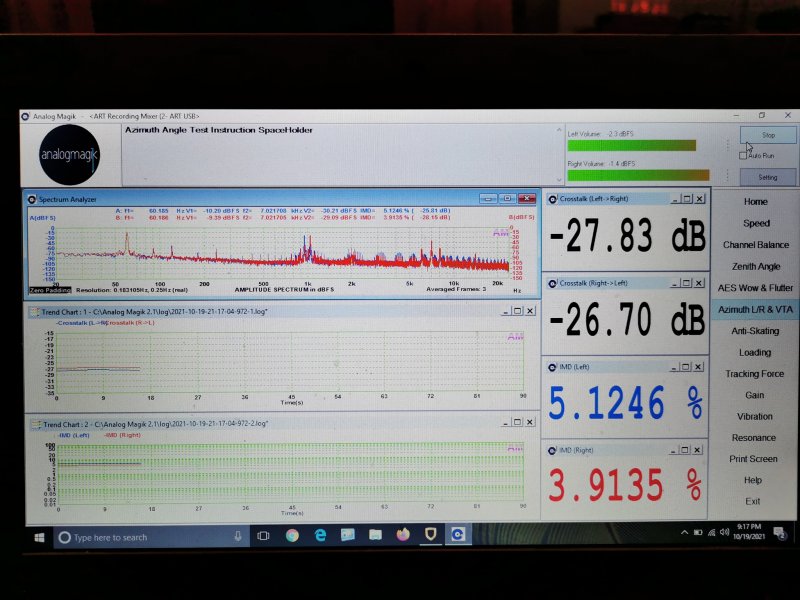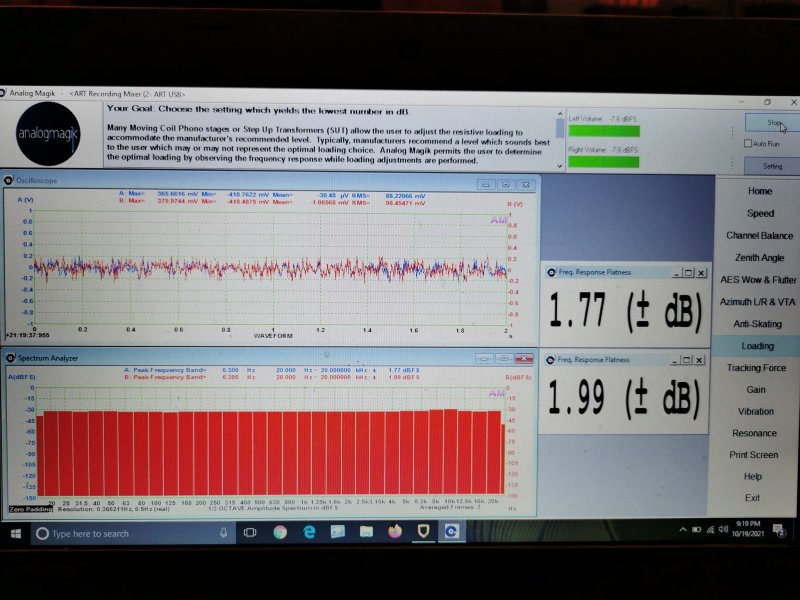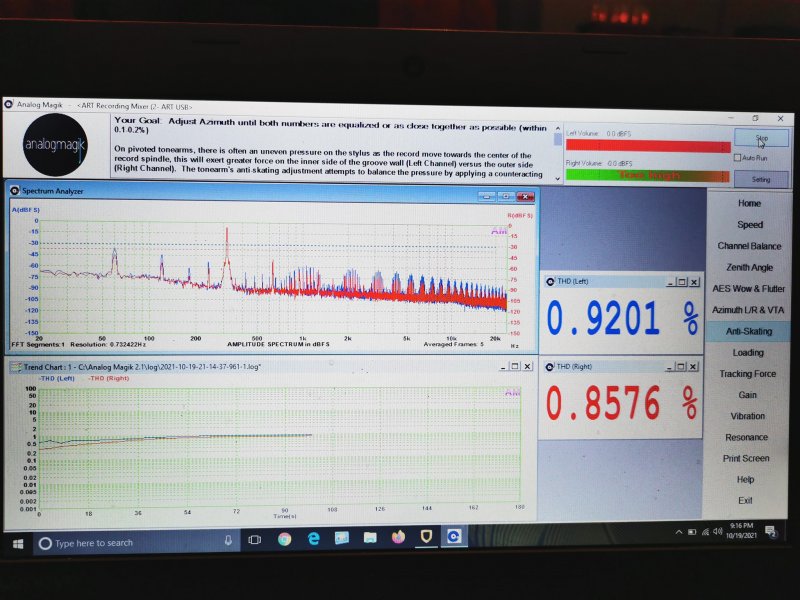Hi,One of the issues I've always struggled with in AM is drifting readings as tracks progress. This has always been a roadblock with VTA for me, for instance, as I could never determine whether improvements were being made or not. Well, today, I found a way...
Starting at my current VTA setting I played the VTA track and watched the numbers rise over time, and noted that one channel consistently hit 5% IMD before the other after 30+ seconds or readings and I wondered whether I could use that 5% threshold as a relative comparison mark for making repeatable measurements. So I made a bunch of readings using various stepped VTA (very easy to adjust on Kuzma 4Point) changes and made notes of the value of one channel when the other hit 5%. It showed a clear "pivot" point around which readings in the other channel got better or worse (closer or further from the targetted channel's IMD%). Repeating various VTA readings confirmed this. So, I then corrected VTF and Azimuth at that pivot point and started again. This time using VTA adjustments half the size of before (the binary chop approach of homing in on a correct position) and, for the first time, I noticed much better tracking between the two channels and so was able to focus on 4% as the pivot point. Same results - a VTA pivot point was found - now much closer to the previous one than my starting position. Again, I corrected Azimuth and VTF and tried a third time. VTA adjustments were now half again and only needed one change after which the numbers tracked very closely in both channels across the duration of the VTA track and further changes in VTA increased errors both ways, so I settled on this as the final position. Checking Azimuth I found it hadn't changed this time and VTF had changed slightly, but I left it alone so as not to upset VTA.
Final results were VTA IMD% hovering around 4% after 30-45 seconds and within a 0.15% difference between both channels for the duration (I'm assuming Zenith error is present and this number could be lower), down from 6%+ in one and differences of up to 1%, and azimuth was within 0.1dB in both channels and VTF was in my nominal preferred position.
I seem to have finally found a way to work with VTA in AM...
1. Ensure azimuth and VTF are correctly set
2. Watch a reading over 30-45 seconds and watch for which channel is highest, reaching an integer value after that duration, eg 4%, 5% whatever
3. Choose that % reading and use this as the target point for readings.
4. Now take some VTA readings, with adjustments being half the size of the previous round, and make note of what each reading is when the target channel hits the target IMD%
5. Hopefully you find a pivot point around which numbers get worse in both directions. That pivot point becomes the new VTA position.
6. Go to 1
At some point you should notice that changing VTA either way causes a swing away from the current pivot and that it's time to stop. The binary chop approach should get you to that position in the fewest iterations. Always double check azimuth and VTF - hopefully they don't need changing after the final position is found. If they do, then there's probably more work to do, depending on how precise you want to be, but at some point you need to stop!
My hope is that v2 of AM has some sort of rolling averaging window or something similar to help make readings quicker and more consistent but I'm happy I seem to have found a method for working with a drifting VTA reading.
My assumption with the above approach is that balanced numbers in each channel is a superior result to one channel being as low as possible at the expense of the other channel.
Anybody see any problems with the approach I outlined, with regards AnalogMagik?
being not English I have problems totally understand your procedure,
could you explain fool proof?
in point 4 are you using one channel for reference and the other one to measure?
Thanks
Max










